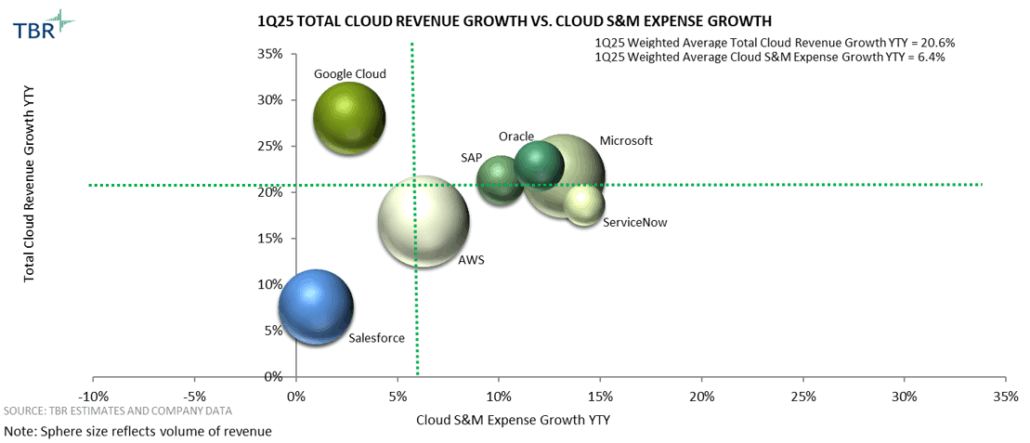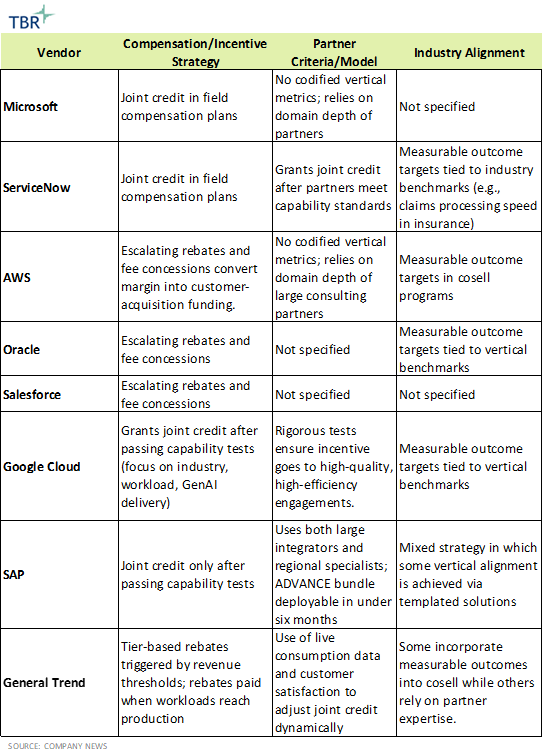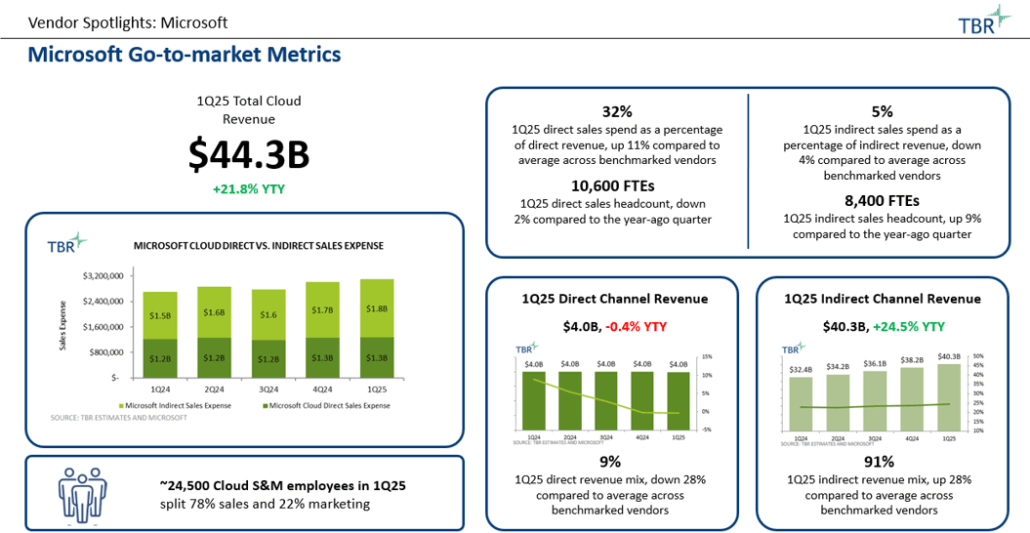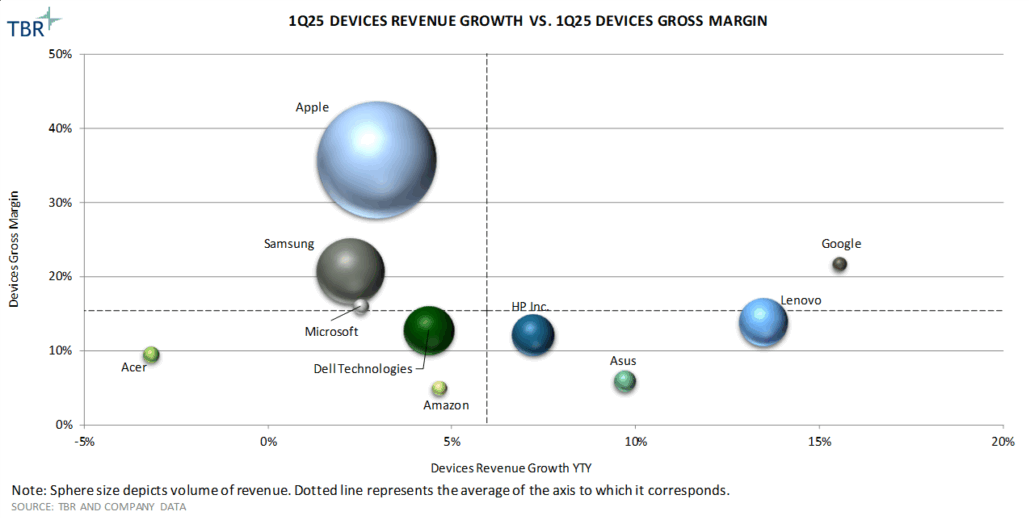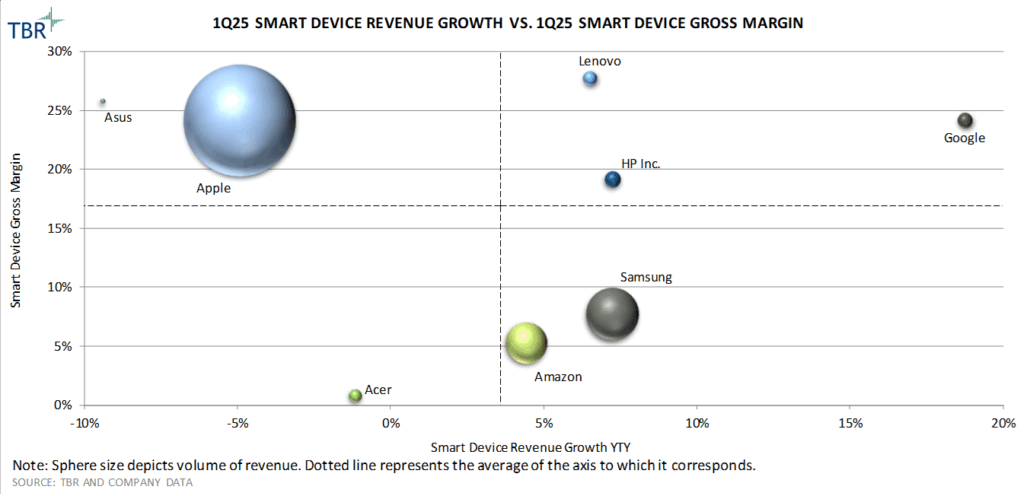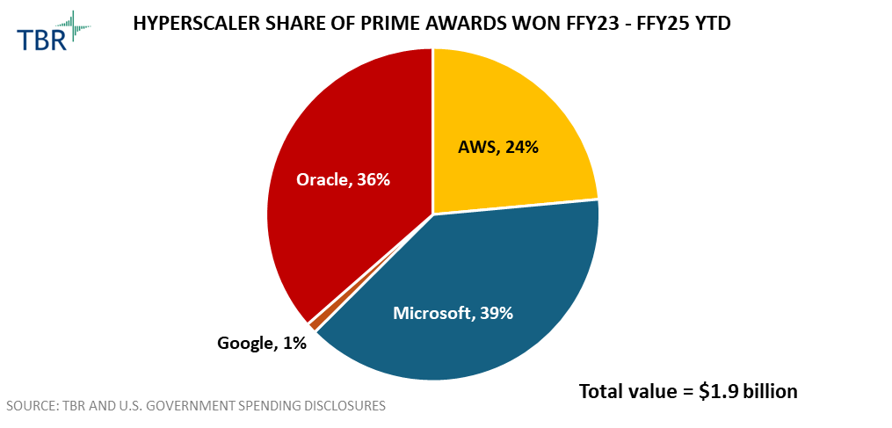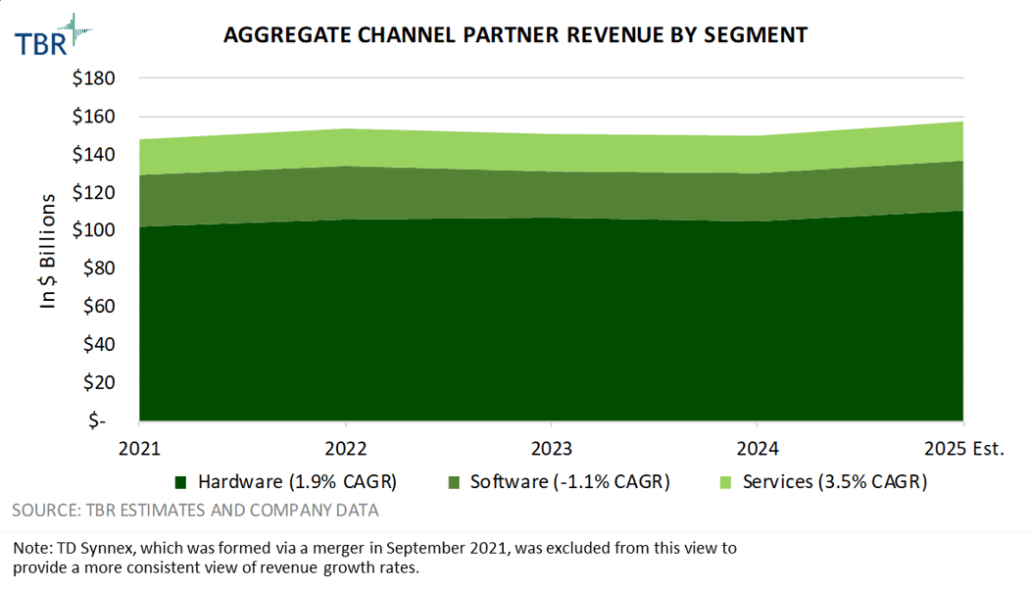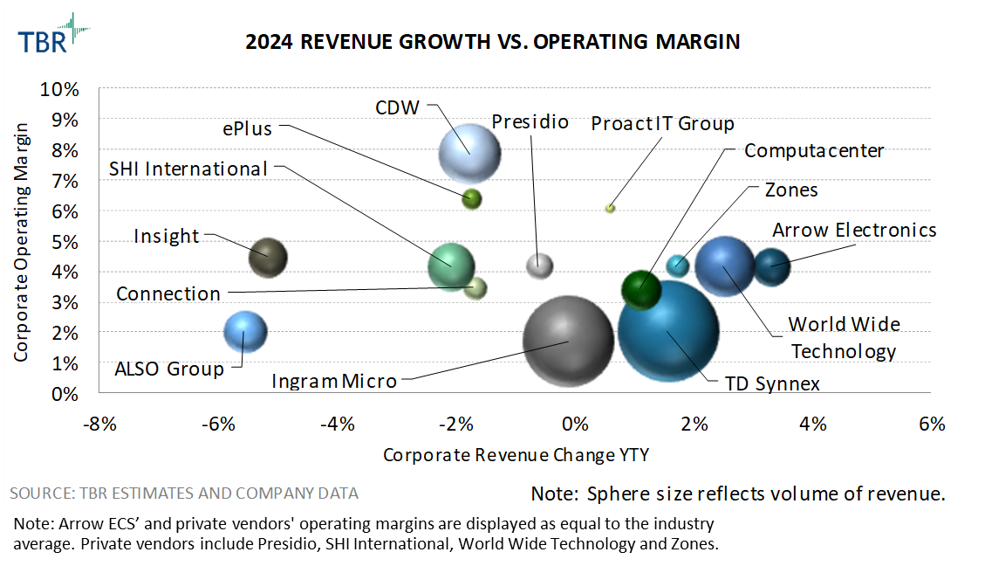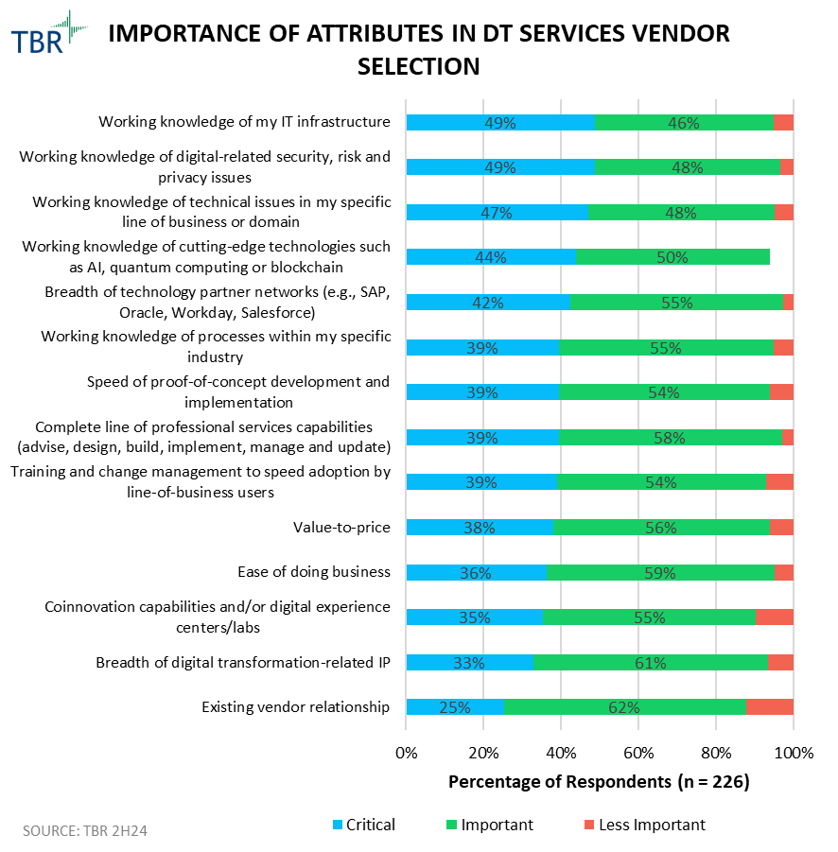Amdocs Is Well Positioned to Continue Absorbing Market Share in the Telecom Industry; AI Is a Key Growth Vector
2025 Amdocs Analyst Summit, Kent, U.K., Sept. 16-18, 2025 — A select group of industry analysts gathered at Port Lympne in Kent, U.K., to hear from executives and business unit leaders on the company’s strategy, portfolio and go-to-market approach, as well as other aspects of its business. Amdocs’ chief marketing officer, chief strategy officer & chief technology officer, along with leaders from the company’s key business units, presented updates on their individual areas of focus. This year’s theme, “Into the Wild,” conveyed that AI will significantly change the telecom industry, and a major portion of the event was dedicated to discussions on AI and how Amdocs is evolving its business with AI.
TBR perspective
AI will forever change the telecom industry, and Amdocs aims to be at the intersection of that change, helping its customers (primarily communication service providers [CSPs]) lean into and reap the benefits of this new technology paradigm. CSPs are still trying to figure out what they want to be in the digital economy — a feat made more difficult by the advent of AI. Some telcos aim to remain utilities, providing connectivity services, while others seek to become techcos; additionally, some aim to be a hybrid of the two. Amdocs offers solutions that can help CSPs in whichever path they choose.
Due to forays into new areas, such as personality agent engineering for brand evolution, customer experience design and agentic AI transformation, Amdocs estimates its Serviceable Available Market (SAM) is $57 billion in 2025, up from $36 billion in 2021.
TBR sees multiple tailwinds blowing in Amdocs’ favor and the company is likely to continue gaining market share in traditional and newer market areas it is targeting. AI will juice this growth as Amdocs seems to be more sophisticated with its AI strategy and offerings compared to its primary competitors (especially as it pertains to the telecom industry). Though Amdocs is making a strong push toward AI transformation, most CSPs will delay adoption due to technical debt and data usability problems, as well as a focus on pending M&A. (Amdocs tends to consolidate and grow market share in CSP M&A events, while weaker, unfocused vendors tend to lose share as synergies are realized.)
This situation may limit the traction Amdocs’ AI initiatives obtain in the short term but will keep the company busy with plenty of business opportunities on the latter issues (i.e., addressing technical debt and data usability challenges) in the meantime. CSPs are investing in AI, but the nature of those investments is more about implementing targeted, quick-hit use cases than large-scale transformation initiatives.
Watch on demand: Telcos Risk Losing the AI Race Without Strategic Shift; $170B at Stake by 2030
Amdocs aims to be a brand consultant and technology enabler for the agentic AI era
AI will have a significant impact on CSPs’ brands. A reassessment and reassertion of brands will be necessary as agentic AI takes hold, and CSPs will need to determine what the agentic version (including the look, feel and personality) of their AI interfaces (e.g., brand avatars) will be. Amdocs has conducted extensive research into this emerging area, dubbed personality agent engineering, and aims to take a consultative approach toward helping CSPs position their brands in the AI era, including planning, design and development of AI avatars as well as aligning their brand messaging with their brand strategy.
Although TBR believes it is very early days for agentic AI branding, Amdocs’ early foray into this emerging area and thought leadership underscore how the company is seeking to move into new and adjacent areas as it expands its offerings, especially around consulting, design and transformation enablement.
Technical debt and data usability impediments continue to bog down CSPs, which will keep Amdocs busy
AI adoption is accelerating rapidly but most CSPs are not prepared to implement it at scale within their organizations. Two key reasons for this are the persistent challenge of dealing with technical debt and the data usability problem. In terms of technical debt, despite having begun cloud migrations more than 15 years ago, the telecom industry is only an estimated 30% complete with this transition, with nearly all of that 30% being in the IT domain.
CSPs have barely made any progress in migrating network domain workloads to the cloud. Lacking the full potential that cloud offers in flexibility and agility hinders CSPs in adopting new architectures and platforms, such as open vRAN and cloud-native networks. Further, most CSPs are still running legacy technologies at large scale that are at least 20 years old, such as xDSL, MPLS, 2G and 3G. If CSPs move this slowly, how will they ever obtain the flexibility and agility that AI requires?
Additionally, CSPs face a universal data usability problem, one that could derail or significantly delay the timeline of their AI transformations. AI is only as good as the data it is trained on, and data is the foundation on which AI is built. The reality is that most enterprises, especially CSPs, lack a unified data lake, limiting their ability to effectively train AI models. Rather, most organizations have data silos and data islands, all with varying levels of governance and oversight.
CSPs especially have a data problem because most are amalgamations of M&A over decades, and with each M&A event, new data layers are added to the fold, but they usually remain largely separate. A nascent crop of data management platform companies, such as Databricks and Snowflake, aim to tackle this issue head-on for enterprises, but TBR’s analysis suggests CSPs continue to underestimate the time and cost of data management transformation.
Amdocs plays a unique role in the ecosystem as the company is a change agent for consolidation and digital transformation on the software systems side (particularly for OSS and BSS). This uniquely positions the company to help CSPs consolidate and build aspects of this data management framework via Amdocs’ AI and Data Platform. So, even though CSPs may be delayed in adopting AI at scale, Amdocs will still be extremely busy helping them become AI-ready.
Business outcomes are the future, but the path there is uncertain
Amdocs executives and the analyst community represented at the event broadly agreed that business outcomes will become the primary monetization model in the AI economy. However, there was also broad agreement that what this looks like from a commercial model structure perspective remains a big unknown. Labor-related tasks have historically been monetized on a time-and-materials or cost-plus basis, and software has transitioned to a subscription-based, consumption-based or “as a Service” model. Selling outcomes will be very different (e.g., how to price, how to measure value, how to assess and manage risk, how to structure terms and conditions of a contract), and this model will likely significantly impact labor-oriented businesses, such as global systems integrators. The selling of business outcomes also requires changes to procurement and sales organizations.
TBR expects commercial models to evolve first to a hybrid of outcomes and more traditional models, with traditional companies primarily taking this more risk-mitigated approach. Meanwhile, TBR expects a new crop of disruptive companies that are more heavily geared toward outcome-centric models to enter the picture. This type of market disruption was witnessed with the SaaS trend, and the march toward selling outcomes will likely follow a similar trend.
Product (technology)-led services go-to-market approach is more conducive to outcome-based commercial reality
Amdocs firmly believes its product-led services approach is unique and better suited to aligning with market changes being brought about by AI and the shift toward outcome-based commercial models. Specifically, leading with products embedded with AI capabilities eases the impact of disruption on the labor side of the business model. This contrasts with C&SI firms, which are services-led and services-centric in their go-to-market and pricing models. Services-led companies likely face a much greater impact from disruption than companies that lead with products but also provide services related to those products.
Like all companies, Amdocs will still face fundamental changes to its organizational structure, workforce and delivery models from these market trends (i.e., AI and commercial model evolution), but TBR believes the magnitude and associated risks of that impact will be relatively less for Amdocs compared to traditional C&SI services firms.
Accountability-based model will become more desirable as the telecom industry navigates deeper into uncharted waters
Amdocs prides itself on its “never give up” mindset and approach to work. This accountability-based model is culturally embedded within the organization and is a key differentiator and selling point for the company when positioning itself for new business. Additionally, Amdocs’ expertise in dealing with mission-critical systems (e.g., carrier-grade networks and supporting operational and business systems) makes it an ideal partner at a time when companies are facing monumental disruption and persistent change. TBR expects Amdocs will increase its share in the telecom market and find new opportunities in other verticals, especially those that are also in mission-critical sectors, such as financial services.
TBR notes that Amdocs’ positioning differs from that of most other vendors and C&SI firms, which may have a lower tolerance for risk and risk sharing and are more apt to disengage or deleverage situations when significant problems arise. History is full of examples where services providers missed the mark with customer transformations and had to pivot midproject, and customers are cognizant of the risk of these types of situations potentially occurring.
Conclusion
Amdocs may be getting too far ahead of its customers in terms of AI, as CSPs are not ready to embrace and adopt the AI world Amdocs envisions. However, a plethora of CSP needs in the areas of system consolidation from M&A, as well as technical debt and data usability, will keep Amdocs busy with a steady flow of business opportunities for years to come. Amdocs is well positioned at the intersection of the three aforementioned trends in the telecom industry.
Additionally, thanks to its unique product-led services business model, the company is also well placed to thrive amid the impending disruption that will result from a shift to outcome-based commercial models and the impact of agentic AI on the professional services industry.

